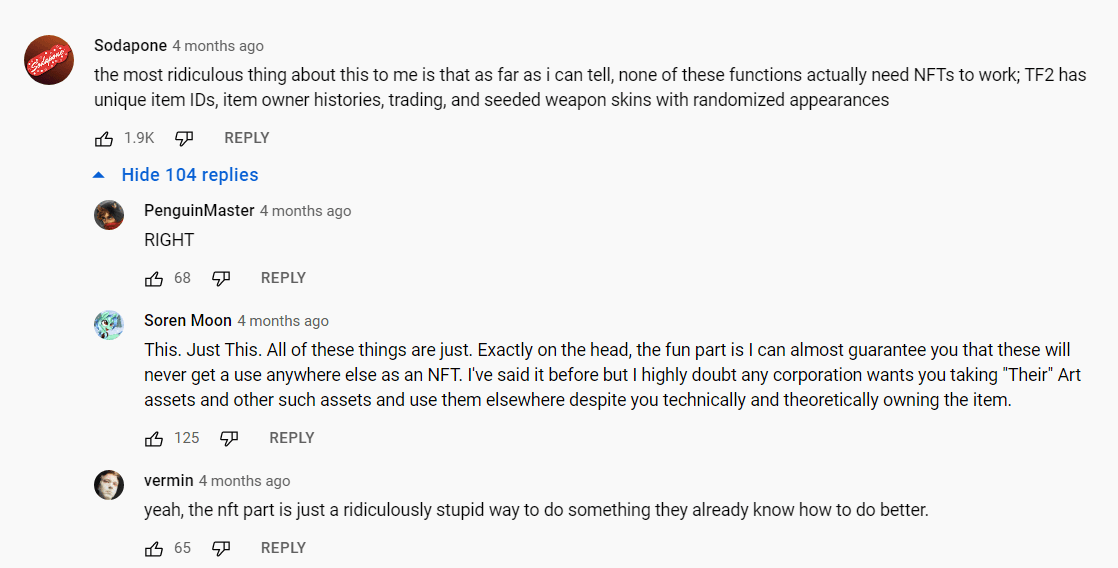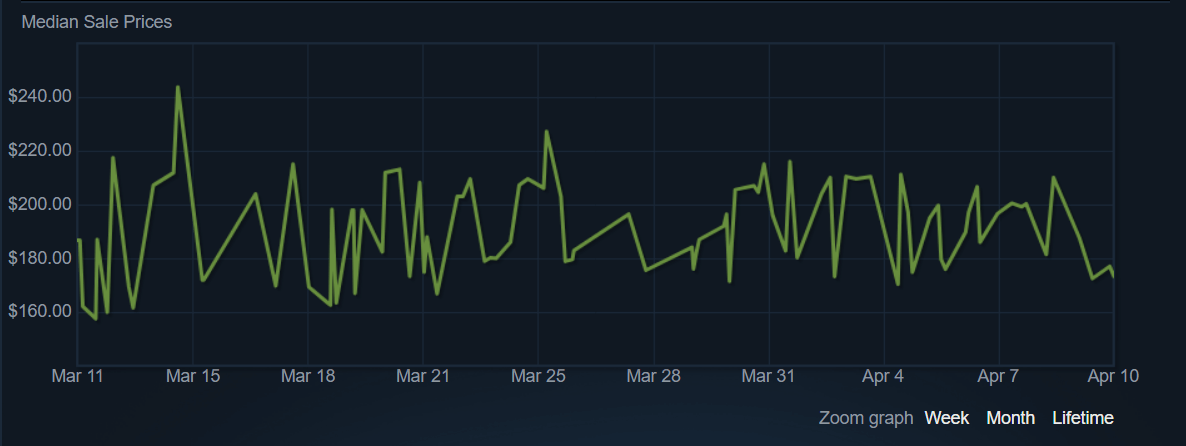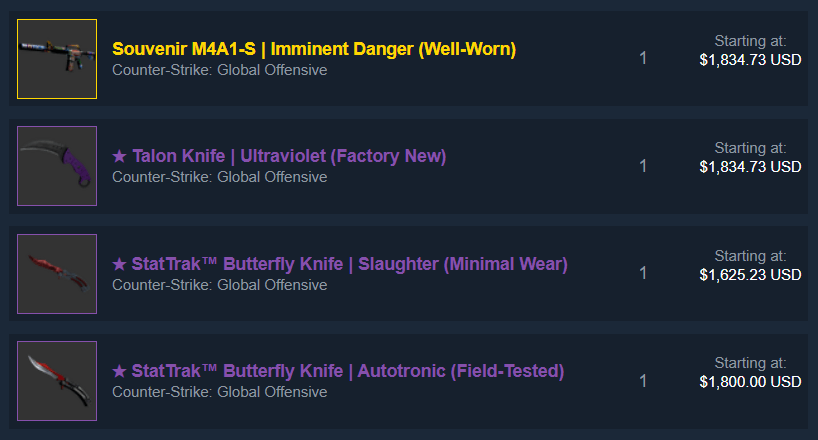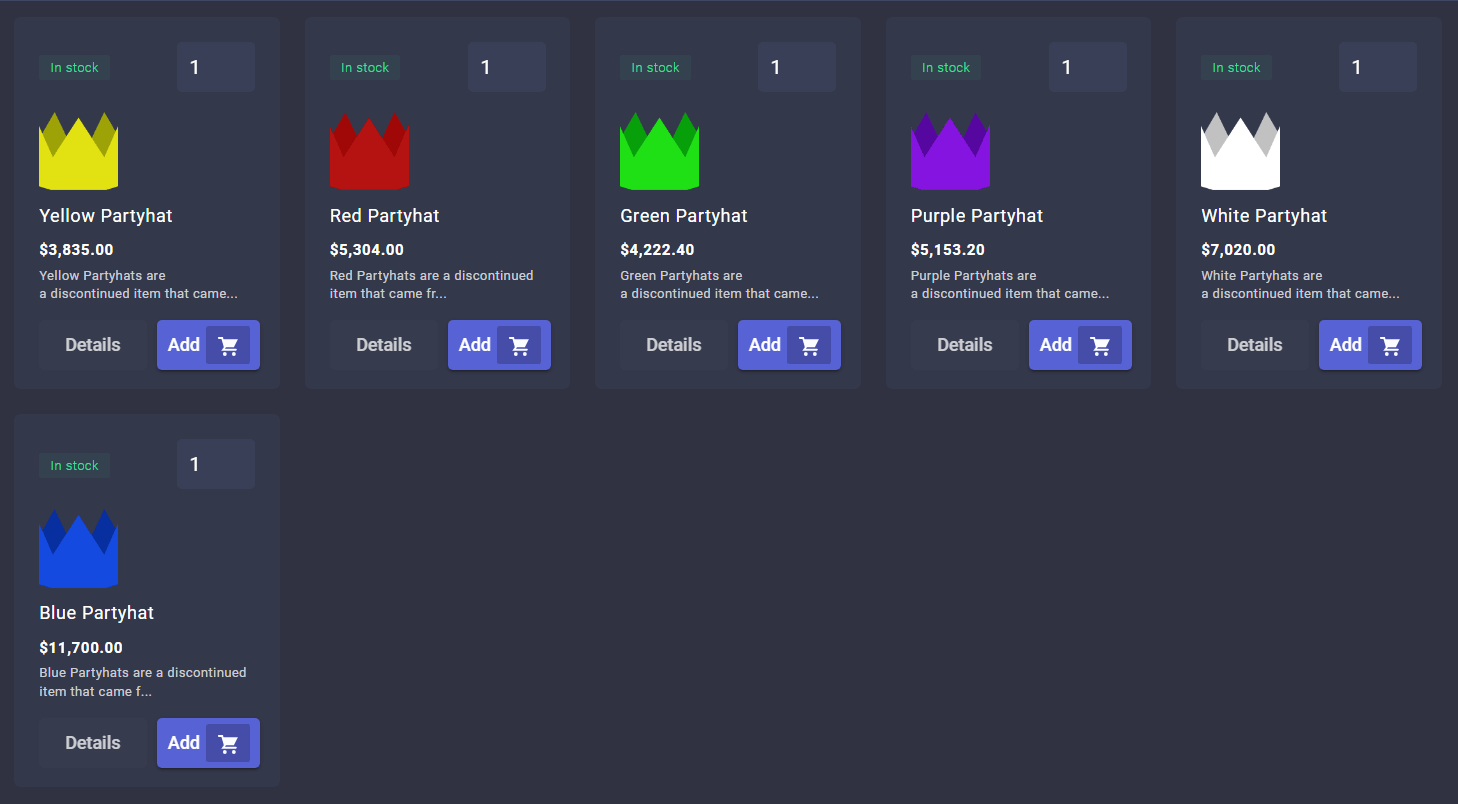- April 15, 2022
- Posted by: admin
- Category: BitCoin, Blockchain, Cryptocurrency, Investments
In December, Ubisoft debuted the Quartz NFT platform, which allows players in Ghost Recon Breakpoint to buy (or acquire) unique gear in the form of NFTs (called Digits). While the game itself has stopped receiving major new updates, the service platform, according to the publisher, will continue to grow in the near future.
Introducing Ubisoft Quartz
We're bringing the first energy efficient NFTs playable in a AAA game to Ghost Recon: Breakpoint!Try it in the beta from December 9 with three free cosmetic drops and learn more here: https://t.co/ysEoYUI4HY pic.twitter.com/owSFE2ALuS
— Ubisoft (@Ubisoft) December 7, 2021
Whilst the sentiment on Twitter was split between NFT enthusiasts applauding the announcement and gamers being against it, the response on YouTube gave a clearer picture of people’s opinions.
According to Kotaku, the YouTube announcement video for Ubisoft Quartz had a 96% dislike ratio. Comments on the video include remarks such as:
“Ubisoft, once again, giving us something we didn’t ask for, don’t want, and won’t enjoy.”

“Imagine if Ubisoft actually put some thought on making games that people like instead of endlessly trying to print money”.

Perhaps the most telling of all the comments was this one by Sodapone:
“the most ridiculous thing about this to me is that as far as I can tell, none of these functions actually need NFTs to work; TF2 has unique item IDs, item owner histories, trading, and seeded weapon skins with randomized appearances”.

This backlash raises an important question, how should NFTs be implemented into traditional gaming?
What’s an NFT?
A non-fungible token (NFT) is a unit of cryptographic data that is stored on a blockchain. NFTs can be transferred, sold, and traded and each one is unique and individually identifiable. These tokens can be associated with real-world items, digital goods, images, audio, art, and more.
Enthusiasts believe that NFTs give rights and ownership to creators and holders, allowing them to profit from creating or owning the asset.
For example, creators can easily enforce DMCAs since it’s very easy to prove ownership of an NFT, they can also earn an income by taking a percentage from every sale of their NFTs on the secondary market.
When it comes to owners, they can receive commercial and ownership rights if they purchase an NFT. If an NFT collection becomes popular they can profit from licensing their NFT to others for commercial purposes or create a merchandise collection based on their NFT.
There’s also the argument that if you hold a digital thing as a non-fungible token (NFT), you can resell, trade, or donate it to others.
On the other hand, detractors believe that NFTs are worthless since the commodity being sold is virtual and arguably unenforceable. Critics also believe that many NFTs serve no real purpose apart from lining the pockets of the founders. The reality, however, may lie somewhere in the middle.
How NFTs are currently being used in games
The Ubisoft Quartz announcement isn’t the first time NFTs have been used in gaming. Axie Infinity is a Play-to-Earn game where players can own, trade, breed, and battle Axies, which are NFTs on the Ethereum blockchain.
Players use their Axies to battle against the AI in Player-vs-Environment (PvE) or against other players in Player-vs-Player (PvP) combat. In return for winning battles, they earn the crypto token Smooth Love Potion (SLP) which can be traded and is needed to breed new Axies.
The Sandbox is another game where NFTs have already been implemented. In this game, players can use NFTs on the Ethereum blockchain to build their own virtual world.
The Sandbox, along with Axie Infinity are two of the most popular NFT games in the crypto space, however, there is backlash when there are talks of bringing NFTs into traditional gaming.
Why many gamers are against NFTs being integrated into traditional gaming
Going back to the Ubisoft Quartz announcement, one complaint that gamers had was a lack of consumer protection, with Twitter user Robert Anderberg (@bobbydigitales) saying:
“Once my son accidentally bought a $60 game on our Playstation and Sony refunded it! Now he can accidentally buy a $1000 gun and I can’t do anything about it, amazing progress!”
This statement was made as part of a Twitter thread Robert made criticizing the Ubisoft Quartz platform. One of the criticisms is Ubisoft not being able to reverse or cancel transactions.
Oh hey, look at this amazing Ubisoft Quartz! Let's quickly check the terms to see how amazingly empowered they're making me and how much better than a normal store this is! pic.twitter.com/TD3to5GpeC
— Robert Anderberg (@bobbydigitales) December 7, 2021
However, that issue doesn’t have anything to do with Ubisoft and is actually due to the immutable nature of blockchain technology.
There are even some gamers like Simon (@itsmeSTYJ) who believe that irreversible transactions can protect holders from getting scammed by other gamers. Simon mentioned a scenario where a friend of his was scammed after selling a skin to a gamer who then requested a refund and kept the skin, an act that is known as buyer fraud.
Irreversible transactions can help to protect p2p traders. I know many friends who were scammed trying to sell skins on CSGO because the person on the other end requested for a "refund" after receiving said skin.
It's all about where you use it.
— Simon (itsmeSTYJ.eth) (@itsmeSTYJ) December 8, 2021
Another complaint is Ubisoft refusing to give NFT owners the rights to modify or create derivative works based on the look of their “Digit” NFT. Holders are also barred from trying to use the visual representation of their Digit in videos or any other form of media, they’re also not granted any commercial rights too.
Let's see how this is building the #metaverse and what amazing empowerment I'm getting in terms of really owning something! pic.twitter.com/Q48gSTXrls
— Robert Anderberg (@bobbydigitales) December 7, 2021
This is in stark contrast to PFP (profile pic/picture for proof) NFT projects like Bored Ape Yacht Club or Tasty Bones that give holders commercial rights to their owned NFTs. Commercial rights allow holders to create derivative works and monetize the NFTs they own, for example by creating and selling merchandise, a hallmark of true ownership.
Another gripe many gamers have about NFTs in gaming is the feeling that they’re being added solely to make money for the creators. Major gaming studios like Ubisoft and EA Games have already been criticized for adding microtransactions and loot boxes to games, a practice that has been seen as “predatory” by some critics.
So when gamers see that a company that has been associated with loot boxes and microtransactions has now decided to add NFTs, they tend to have a cynical outlook on the situation.
There are also concerns about the possible effect NFTs could have on the environment. Despite Ubisoft Quartz using Tezos, a Proof-of-Stake platform (no physical mining required, so little environmental impact), gamers have still expressed concern.
This concern may be coming from gamers who are not fully informed since Proof-of-Stake (PoS) blockchains are actually energy-efficient so this concern would not apply to Ubisoft Quartz.
They’re most likely thinking about Ethereum NFTs in this case since Ethereum started out as a Proof-of-Work (PoW) blockchain and still uses this system alongside a PoS algorithm.
However, once Ethereum completes the transition to Ethereum 2.0, its network will be supported 100% through the PoS mining algorithm, making it more energy-efficient. Other popular blockchains for NFTs like Solana are already using the PoS protocol too.
High barrier to entry
Another objection players have to NFT gaming is the high barrier to entry for certain games. A lot of NFT games require players to purchase NFT-based characters or land before they can play, and depending on demand these costs can quickly become prohibitive for players who cannot afford to pay for these assets.
Axie Infinity is one example of this, before playing, players must have a team of three Axies, and an Axie can cost anywhere from $25 to over $100 depending on its traits, so a player can expect to pay anywhere from $100 to over $300 just to get started.
On the low end, this is about twice as much as a AAA game, which costs around $60 on average. You can see how expensive this cost might be, especially for players from the Philippines, which is home to 40% of the game’s more than 8 million players.
The start-up costs are too expensive for working-class Filipino gamers, especially when you consider that the average pay in the Philippines is $3,218 per year ($268 per month). Players in the Philippines can end up paying over a month’s salary just to get started.
The right way to implement NFTs into gaming
If developers plan on implementing NFTs into traditional gaming, they should be looking at past examples of how digital goods were traded between players. Good examples include CS:GO skins and Runescape party hats, we’ll at both in detail below:
Counter-Strike: Global Offensive Skins
Skins, often known as finishes, are a Counter-Strike: Global Offensive (CS:GO) feature that was introduced in the Arms Deal update.
They are in-game weapons with various textures that can be equipped. They are purely decorative and have no purpose in the game.
CS:GO skins on the Steam MarketThese skins can be obtained in a variety of ways, including winning them via random drops, trading with other players, and purchasing them on the Steam Market.
CS:GO has millions of monthly active players, thanks in large part to the game’s eSports prominence. Although the skins are virtual cosmetic items, they have a very real monetary worth that is decided by the CS:GO economy.
Valve (creators of CSGO & Steam) does have an effect on the rarity of stuff like Souvenir skins, so it’s not exactly a free market.
However, it’s still a market, with prices shifting over time; for example, if you check the Steam Market page for each Global Offensive skin, you can view a graph that shows the median sale price over time, similar to Coinmarketcap for cryptocurrencies.

So why are these skins so popular? One reason is eSports gambling. Spectators like betting on games in eSports, just as they do in conventional sports. A slew of companies have cropped up around CS:GO, utilizing the Steam API to allow players to wager on eSports contests using the in-game skins.
Many of these websites, such as CSGO Lotto, CSGOBIG, and CSGO Lounge, rely on CS:GO’s brand power to attract customers.
When players place bets, the skins are transferred to a bot-controlled Steam account owned by the third-party service the player is using when they place a wager with them. (This however, seems to be a breach of the Steam Subscriber Agreement – Section 4 for using bots.)
If the player wins, they get their skins back, as well as the skins wagered by the losing players. The winning player can then resell those skins for a profit, either on the Steam Market or on a third-party website.
Another major reason is item rarity and high demand, with “Legendary Skins” going for over $1,000 due to their very low drop rates.

So what do CS:GO skins have in common with NFTs?
- Some skins are very scarce with a limited supply
- They’re easily tradable between players
What can game developers learn from this?
- Tap into the eSports industry to drive engagement, possibly by offering NFT skins as a reward
- Build a marketplace for players to trade their NFT skins
How can game developers monetize this?
- Small trading fee for trades on the marketplace
- Have special tournaments where players can stake their NFTs, with the winner taking the staked NFTs
Runescape Party Hats
RuneScape was first launched in 2001 and the first Christmas event in RuneScape took place in December 2001. Party hats (spelled “partyhats” on Runescape) were obtained by opening Christmas crackers, which were dropped during the 2001 Runescape Christmas event.
Players would locate the Christmas crackers and use them on another player, giving them a 50% chance of receiving a Party Hat, the first rare wearable that was later canceled.

There are six different colored party hats, all of the same shape and size (red, yellow, green, blue, purple, and white). When worn by a player these hats resemble a crown.
Since the party hats were soon discontinued, they became a very rare and much sought-after status symbol, worth billions of coins.
Even though it had no use, the party hat went on to sell for billions of gold pieces between players, eventually exceeding the maximum amount of gold that could be exchanged in-game.
These are currently the most valuable objects in RuneScape. Party hats are worth more than 28 – 70 billion Runescape gold according to this Reddit thread and they carry a street price (real-world price) of $8,120 – $18,760.
Since the gold coin trading limit is 2.1 Billion gold coins, party hats have also been used as a store of value, due to them being worth more than the maximum gold trading amount. In some respects, they mirror Bitcoin and popular NFT collections by acting as a store of value.
The number of party hats has decreased over time. Because there were fewer players when party hats were released, fewer were purchased when they became available. Furthermore, party hats were almost worthless at the time of release (again similar to Bitcoins at launch), thus many gamers threw them away immediately.
Most of the few players that managed to keep their party hats soon left RuneScape or were banned, leaving a very small number of active party hat users.
So what do party hats have in common with NFTs?
- They’re scarce with a limited supply
- No more party hats can be created
What can game developers learn from this?
- Drop NFT items to players for free
- Don’t artificially restrict the supply (via burning mechanisms)
- Allow the supply to decrease naturally (via inactive accounts for example)
How can game developers monetize this?
- Have a small trading fee if they wanted to monetize of this
How NFTs should be used in traditional gaming
Game developers should always take a gameplay-first approach when it comes to NFT gaming. Due to its massive popularity, many corporations have been scrambling to make “metaverse” and “NFT” games, focusing more on flashy buzzwords and poorly implemented, blockchain-based gameplay elements.
It’s like putting the cart before the horse, some corporations are creating NFTs and trying to build a game around it, instead of creating a game and adding NFT functionality.
There are better ways to implement NFTs into gaming and this includes the following five ideas:
1. Use a Free-to-Play model
Free-to-play gaming models reduce the barrier to entry drastically for gamers, at the very least don’t make it a requirement for players to own expensive NFTs in order to play the game.
In fact, cosmetic items might be the best use case for in-game NFTs. That’s how the popular Battle Royale game Fortnite makes money, with players spending $50 million on only one set of Fortnite skins.
Players shouldn’t feel restricted when trying to play a game, that’s why sticking to cosmetics is one of the best ways to add NFTs into traditional gaming, since cosmetics serve no purpose apart from allowing players to stand out visually.
2. Airdrop NFTs to players
Game developers can airdrop NFTs of varying rarity to players, these can be a reward for reaching a certain level, completing certain objectives, or as part of an event (Christmas, Halloween, etc.)
These airdrops could increase player engagement and loyalty, plus if players get their hands on some rare drops, game studios can make some bank when those rare NFTs are traded (due to trading fees or built-in royalty fees).
3. Use tournaments to drive engagement
Esports is one of the biggest gaming industries, with over 474 million people tuning in to watch gamers compete. Game developers can create tournaments with rare NFT skin prizes.
Tournaments can also have a wagering aspect to them, for example with players staking their NFTs to enter a particular tournament or battle, with the winner taking all of the staked NFTs from the losers.
4. Build a marketplace
Game developers can build a marketplace for players to easily trade their NFT skins, again helping to drive engagement and it can also act as an additional revenue stream due to trading fees and exclusive NFT releases.
5. Create a wallet or create integrations for popular wallets
Finally, having built-in integrations for popular NFT wallets or an in-house wallet to make it easier for players to manage, trade, buy and sell their NFTs.
The post NFT Gaming: How should new NFT games work? (5 ideas) appeared first on CryptoSlate.

